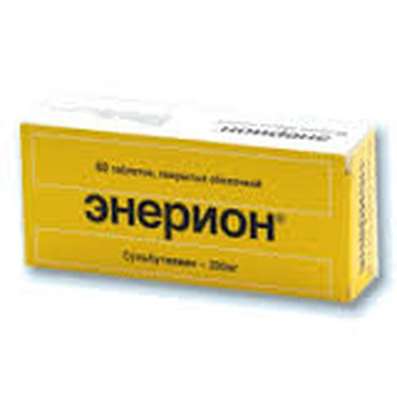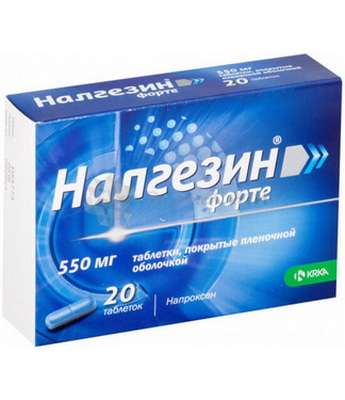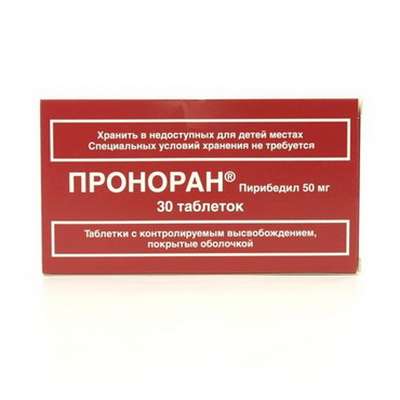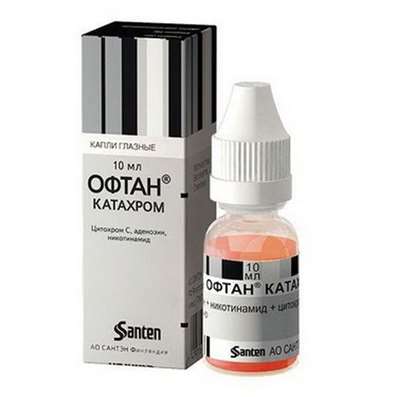Instruction for use: Copaxone 40
I want this, give me price
Dosage form: Solution for subcutaneous administration
Active substance: Glatirameri acetas
ATX
L03AX13 Glatiramer acetate
Pharmacological group:
Immunomodulating agent [Other immunomodulators]
The nosological classification (ICD-10)
G35 Multiple Sclerosis: Disseminated Sclerosis; Multiple sclerosis; Recurrent multiple sclerosis; Secondary-progressive multiple sclerosis; Exacerbation of multiple sclerosis; Mixed forms of multiple sclerosis
Composition
Solution for injections of 1 ml
active substance: Glatiramer acetate 40 mg
Auxiliary substances: mannitol - 40 mg; Water for injection - up to 1 ml
Description of dosage form
Lightly opalescent solution from colorless to light yellow color.
Pharmachologic effect
Mode of action - immunomodulating.
Pharmacodynamics
The mechanism of action of glatiramer acetate in patients with multiple sclerosis is not fully understood. It is believed that glatiramer acetate alters the immune processes presumably playing a major role in the pathogenesis of multiple sclerosis. This hypothesis is confirmed by the results of studies conducted to study the pathogenesis of experimental allergic encephalomyelitis (EAE). EAE is often used as an experimental model of multiple sclerosis. Studies conducted on animals and with the participation of patients with multiple sclerosis have shown that the administration of glatiramer acetate causes peripheral induction and activation of glatiramer acetate-specific suppressor T lymphocytes.
Recurrent-remitting multiple sclerosis. The results of a 12-month placebo-controlled study confirmed the efficacy of CopaxoneŽ 40 at a dosage of 40 mg / ml when given three times a week for reducing the frequency of exacerbations.
When conducting the registration clinical study, the criterion for including patients with relapsing-remitting multiple sclerosis was at least one documented clinical exacerbation in the last 12 months or 2 exacerbations in the last 24 months, or one exacerbation in the last 12-24 months with at least one A focus accumulating contrast (Gd +) and visualized on T1-weighted MRI images for the last 12 months.
The primary goal of the study was to determine the total number of confirmed exacerbations. The secondary goal is to determine the cumulative number of new / increased foci detected on T2-weighted MRI images and the cumulative number of foci accumulating contrast and visualized on T1-weighted images at the 6th and 12th months of the study.
The study randomized 1404 patients in a 2: 1 ratio to a group treated with CopaxoneŽ 40 at a dose of 40 mg / ml (n = 943) or placebo (n = 461), respectively. Both groups were comparable in terms of initial demographic characteristics, features of the course of multiple sclerosis and MRI parameters. Patients had an average of 2 exacerbations of the disease for 2 years prior to screening.
Compared to the placebo group, a statistically significant reduction in the frequency of exacerbations and the cumulative number of foci in T2-weighted images and foci accumulating contrast on T1-weighted images was observed in patients treated with CopaxoneŽ 40 at a dose of 40 mg / ml 3 times a week , Which corresponds to the therapeutic effect of CopaxoneŽ-Teva 20 mg / ml with its daily administration.
A direct comparative analysis of efficacy and safety of the drug at a dose of 20 mg / ml (with daily administration) and 40 mg / ml (with a 3-fold weekly administration) was not carried out in this study.
During this 12-month study, there was no evidence of the effect of the drug on the progression of disability or the duration of exacerbations. Currently, there is no data on the use of the drug in patients with primary or secondary-progressive multiple sclerosis.
Pharmacokinetics
Studies of pharmacokinetics in patients have not been conducted.
The in vitro data, as well as the limited data obtained with the participation of healthy volunteers, show that with the sc administration, the active substance is rapidly absorbed, with most of it disintegrating into small fragments in the subcutaneous tissue.
Preclinical research data
Preclinical data based on pharmacological safety studies, repeated administration toxicity, reproductive toxicity, genotoxicity, or carcinogenicity do not indicate the presence of specific adverse factors for humans other than those already included in the sections of this drug description. In view of the lack of data on pharmacokinetics, it is impossible to determine the permissible limits of concentration in humans in comparison with animals. In a small number of rats and monkeys injected with the drug for at least 6 months, there was a deposition of immune complexes in the renal glomeruli. In a 2-year study in rats, there was no deposition of immune complexes in the renal glomeruli.
Sensitized animals (guinea pigs and mice) had anaphylaxis after administration of the drug. The relevance of this data to humans is unknown. The toxic effect at the injection site after repeated administration of the drug to the animal is related to common reactions.
Indications of the Copaxone 40
Recurrent-remitting multiple sclerosis.
Contraindications
Hypersensitivity to glatiramer acetate or mannitol;
pregnancy;
Children under 18 years of age (efficacy and safety not studied).
With caution: predisposition to the development of allergic reactions; cardiovascular diseases; Impaired renal function.
Application in pregnancy and breastfeeding
Data on the use of CopaxoneŽ 40 during pregnancy are not available, the possible risk of use during pregnancy is not established.
The animal studies performed are insufficient to establish the effect of the drug on pregnancy, embryo / fetal development, childbirth and postnatal development. CopaxoneŽ 40 is contraindicated during pregnancy. During treatment it is necessary to use reliable methods of contraception.
It is not known whether glatiramer acetate is excreted in breast milk, so if you need to use CopaxoneŽ 40 during lactation, you should evaluate the expected benefit of therapy for the mother and the potential risk to the baby.
Side effects
Most safety data for CopaxoneŽ 40 have been accumulated using CopaxoneŽ-Teva 20 mg / ml as daily injections. This section presents the data accumulated during the time of 4 placebo-controlled clinical trials for the use of CopaxoneŽ-Teva in the form of injections at a dose of 20 mg / ml once a day and 1 placebo-controlled study of the use of CopaxoneŽ 40 In the form of injections in a dose of 40 mg / ml 3 times a week. CopaxoneŽ-Teva 20 mg / ml (applied daily).
The most frequent clinical trials of CopaxoneŽ-Teva were reactions at the injection site. A placebo-controlled study showed that the proportion of patients reporting these adverse events was at least 1 time at 70% for CopaxoneŽ-Teva and 37% for placebo. Most often, redness, pain, denseness, itching, swelling, inflammation and hypersensitivity were observed.
A reaction associated with at least one or more symptoms (vasodilation, chest pain, dyspnea, heart palpitations or tachycardia) that manifests itself a few minutes after the injection is called an immediate post-injection reaction. At least one of the symptoms of this reaction was observed at least once in 31% of patients treated with CopaxoneŽ-Teva, compared with 13% of patients in the placebo group.
All the undesirable reactions most frequently observed in patients treated with CopaxoneŽ-Teva compared to the placebo group are presented below. These data were obtained from 4 double-blind, placebo-controlled trials involving 512 patients who received CopaxoneŽ-Teva on a daily basis and 509 patients who received a placebo for 36 months. Three studies involved 269 patients with a diagnosis of relapsing-remitting multiple sclerosis who received CopaxoneŽ-Teva daily for 35 months and 271 patients from the placebo group. In the 4th study, 243 patients (the CopaxoneŽ-Teva group) participated in the first clinical episode of the disease, who had a high risk of developing clinically confirmed multiple sclerosis, and 238 patients who received the placebo. The duration of the study was 36 months.
The frequency of unwanted reactions is classified as follows: very often (≥1 / 10); Often (≥1 / 100, but <1/10); Infrequently (≥1 / 1000, but <1/100): rarely (≥1 / 10000, but <1/1000).
Infections and infestations: very often - infections, influenza; Often - bronchitis, gastroenteritis, otitis media, Herpes simplex, rhinitis, periodontal abscess, vaginal candidiasis *; Infrequently - abscess, inflammation of subcutaneous fat, furunculosis, pyelonephritis, Herpes zoster.
Neoplasms, including polyps and cysts: often - benign neoplasms of the skin, neoplasms; Infrequently - skin cancer.
From the hemopoietic and lymphatic systems: often - lymphadenopathy *; Infrequently - leukocytosis, leukopenia, splenomegaly, thrombocytopenia, changes in the morphology of lymphocytes.
From the immune system: often - hypersensitivity reactions.
From the endocrine system: infrequently - goiter, hyperthyroidism.
From the side of metabolism and nutrition: often - anorexia, weight gain *; Infrequent alcohol intolerance, gout, hyperlipidemia, hypernatremia, decreased serum ferritin concentration.
Mental disturbance: very often - anxiety *, depression; Often - nervousness; Infrequent - unusual dreams, psychosis, euphoria, hallucinations, aggressiveness, mania, personality disorders, suicidal attempts.
From the nervous system: very often - headache; Often - perversion of taste, hypertension of muscles, migraine, speech disorders, fainting, tremor *; Infrequently - tunnel wrist syndrome, cognitive disorders, convulsions, dysgraphia, dyslexia, dystonia, motor function disorders, myoclonus, neuritis, neuromuscular blockade, nystagmus, paralysis, incl. Fibular nerve, stupor, visual field defect.
On the part of the organs of vision: often - diplopia, impaired vision *; Infrequently - cataract, corneal damage, dryness of sclera and cornea, hemorrhage in the eye, eyelid ptosis, mydriasis, atrophy of the optic nerve.
From the organs of hearing and balance: often - hearing impairment.
From the CVS: very often - vasodilation *; Often - a feeling of palpitations *, tachycardia *; Infrequently - extrasystole, sinus bradycardia, paroxysmal tachycardia, varicose veins.
From the respiratory system: very often - shortness of breath *; Often - cough, seasonal rhinitis; Infrequently - apnea, sensation of suffocation, epistaxis, hyperventilation of the lungs, laryngospasm, pulmonary disorders.
From the digestive tract: very often - nausea *; Often - anorectal disorders, constipation, caries, dyspepsia, dysphagia, incontinence, vomiting *; Infrequently - colitis, enterocolitis, polyposis of the large intestine, belching, peptic ulcer disease, periodontitis, rectal bleeding, an increase in the salivary glands.
From the side of the liver and bile ducts: often - deviation of liver function tests; Infrequently - cholelithiasis, hepatomegaly.
From the skin and subcutaneous fat: very often - skin rash *; Often - ecchymosis, hyperhidrosis, skin itching, skin diseases *, urticaria; Infrequently - angioedema, contact dermatitis, nodal erythema, cutaneous nodules.
From the musculoskeletal system and connective tissue: very often - arthralgia, back pain *; Often - pain in the neck; Infrequently - arthritis, bursitis, pain in the side, muscular atrophy, osteoarthritis.
From the kidneys and urinary system: often - imperative urges, pollakiuria, urinary retention; Infrequently - hematuria, nephrolithiasis, urinary tract diseases, deviations from the norm of urinalysis.
Pregnancy, postpartum and perinatal conditions: infrequent - spontaneous abortion.
From the genitals and breast: infrequently - engorgement of the mammary glands, erectile dysfunction, prolapse of pelvic organs, priapism, prostate diseases, abnormal performance in smears from the cervical canal, dysfunction of the testicles, vaginal bleeding, vulvovaginal disorders.
Other: very often - asthenia, chest pain *, reactions at the injection site *, **, pain *; Often - chills *, face swelling *, atrophy at the injection site ***, local reactions *, peripheral edema, edema, fever; Infrequently - hypothermia, immediate postinjection reaction, inflammation, cyst, hangover syndrome, mucosal diseases, post-vaccination syndrome, necrosis at the injection site.
* The likelihood of such cases in patients taking CopaxoneŽ-Teva is more than 2% (> 2/100) compared with the placebo group. An undesired reaction without a "*" sign indicates a difference of less than or equal to 2%.
** "Reactions at the injection site (MMR)" (various types) includes any undesirable events occurring at the injection site, with the exception of atrophy and necrosis, which are given separately.
*** Refers to localized lipoatrophy at the injection site.
During the 4th clinical trial, indicated above, after the placebo-controlled phase, an open phase of the study followed, lasting 5 years. During this study, no changes in the previously established safety profile of CopaxoneŽ-Teva were detected.
In patients with multiple sclerosis who received CopaxoneŽ-Teva during uncontrolled clinical trials, and also during post-marketing use, rare (≥1 / 10000, but <1/1000) cases of anaphylactoid reactions were recorded.
CopaxoneŽ 40 at a dosage of 40 mg / ml (applied 3 times a week). In a double-blind, placebo-controlled study that lasted 12 months, the safety of CopaxoneŽ 40 was evaluated in 943 patients with a diagnosis of relapsing-remitting multiple sclerosis compared with a placebo group of 461 patients.
In general, in patients who received CopaxoneŽ 40 3 times a week, adverse reactions at the injection site were the same as those observed with the daily administration of CopaxoneŽ-Teva 20 mg / ml.
In particular, RMI and immediate post-injection reactions (NPII) with the administration of CopaxoneŽ 40 3 times a week were less frequent than with the daily injections of CopaxoneŽ-Teva (35.5 compared with 70% for RMI and 7.8 Compared with 31% for the IRPP, respectively).
In 36% of patients with Copaxone Ž 40, compared with 5% of patients, taking placebo, there were PMI. In 8% of patients who received Copaxone Ž 40, compared with 2% of patients taking placebo, NPII was identified.
In this case, several specific undesirable reactions were noted:
- anaphylactic reaction was observed in patients with multiple sclerosis who received CopaxoneŽ-Teva 20 mg / ml for uncontrolled clinical trials, and also for postmarketing experience in rare cases (≥1 / 10000, but <1/1000). In patients taking Copaxone Ž 40, there were 0.3% of cases (infrequently: ≥1 / 1000, but <1/100);
- no case of necrosis at the injection site was identified;
- 2,1% of patients who received CopaxoneŽ 40 (often: ≥1 / 100, but <1/10), had skin redness and pain in the extremities that were not detected in the case of CopaxoneŽ-Teva 20 mg / Ml:
- in one patient (0.1%) who received CopaxoneŽ 40 (infrequently: ≥1 / 1000, but <1/100), drug-induced liver damage and toxic hepatitis were observed, which were also rare in patients with multiple sclerosis , Who took the drug CopaxoneŽ-Teva 20 mg / ml during post-marketing surveillance.
Interaction
The interaction between CopaxoneŽ 40 and other medications was not evaluated separately. There is no data on the interaction with interferon beta.
There was an increase in the incidence of reactions at the injection site with simultaneous administration of CopaxoneŽ 40 with GCS.
In an in vitro study, it was suggested that glatiramer acetate had a high level of binding to plasma proteins and was not displaced from the association with plasma proteins alone, nor by phenytoin or carbamazepine. Nevertheless, since CopaxoneŽ 40 has a potential effect on protein-binding substances, it is necessary to control its simultaneous use with other drugs.
Dosing and Administration
SC, 40 mg of CopaxoneŽ 40 (one injected with a syringe solution) 3 times a week, the minimum interval between injections is 48 hours. The drug is not for intravenous or IM administration.
Currently, there is no data on the duration of treatment. The decision on the appointment of a long course of treatment should be made by the attending physician in each specific case.
Patients are encouraged to undergo self-injection training. The first injection (and also 30 minutes after it) should be under the supervision of a qualified specialist. To reduce the risk of irritation or pain in the area of injection, it is necessary to change the injection zone every time.
Each syringe with CopaxoneŽ 40 is for single use only.
Recommendations for patients on the use of the drug
1. Make sure that the patient has everything necessary for injection: a disposable syringe filled with CopaxoneŽ 40 solution, a container for used syringes, a cotton swab dampened with alcohol.
2. Before injection, remove the disposable syringe from the outline of the outline package, removing the protective paper strip.
3. Withdraw syringe with solution at room temperature for at least 20 minutes.
4. Before applying CopaxoneŽ 40, wash your hands thoroughly with soap and water.
5. Inspect the solution carefully in a syringe. In the presence of suspended particles or changes in the color of the solution, it should not be used.
6. Choose a place for injection.
Possible zones for independent injections are indicated in Fig. 1: arms, hips, buttocks, abdomen (about 5 cm around the navel). Do not inject into painful areas, discolored, reddened areas of skin or areas with seals and nodules. Within each injection zone, there is enough room for several injections. It is recommended to draw up a scheme of injection sites and have it with you. For injections on the buttocks and hands, the patient may need the help of another person.
Picture 1. Scheme location of injection sites
7. Remove the protective cap from the needle.
8. Preliminarily treating the injection site with a cotton wool soaked with alcohol solution, lightly fold the skin into the fold with the thumb and forefinger (Pic. 2).
Picture 2.
9. With the needle of the syringe perpendicular to the injection site (Pic. 3), pierce the skin and evenly push the syringe onto the plunger, insert its contents into the injection site.
Picture 3.
10. Remove the needle by moving the syringe perpendicular to the injection site.
11. Place the syringe in a container for used syringes.
If the patient forgot to insert CopaxoneŽ 40, an injection should be given immediately, as soon as the patient recalls this. Do not administer a double dose of the drug.
Special patient groups
Children. The drug is not recommended for use in patients under 18 years of age, because clinical studies in these age groups have not been conducted.
Elderly age. Efficacy and safety of the drug in elderly people have not been studied.
Impaired renal function. The efficacy and safety of the drug in patients with renal insufficiency have not been studied.
Overdose
Several reports of overdose have been received (up to 300 mg of glatiramer acetate). No adverse reactions, other than those listed in the "Side effects" section, were not observed.
In case of an overdose, a careful observation, symptomatic and supportive treatment is indicated.
Special instructions
The beginning of treatment Copaxone Ž 40 should be carried out under the supervision of a neurologist and a doctor with experience in the treatment of multiple sclerosis. The drug is not indicated for the treatment of primary or secondary progressive multiple sclerosis.
Patients should be informed of the possible occurrence of adverse reactions, incl. Arising directly after the injection of CopaxoneŽ 40. Most of these symptoms are brief, spontaneously resolved without consequences. If serious adverse reactions develop, discontinue therapy immediately and consult your doctor or call an ambulance. The decision to use symptomatic therapy is taken by a doctor.
There is no evidence that certain groups of patients are more at risk of such reactions. However, patients with cardiovascular disease should be monitored throughout the treatment period.
Several cases of seizures and / or anaphylactoid or allergic reactions have been identified. Serious reactions of hypersensitivity (bronchospasm, anaphylactic reaction or urticaria) can also rarely occur. In case of severe reactions, appropriate treatment should be prescribed and the drug should be withdrawn. In the serum of patients, antibodies to glatiramer acetate were detected. After the course of treatment with an average duration of 3-4 months, their maximal concentration was recorded, which subsequently decreased and stabilized at a level slightly above the baseline.
There is no evidence that antibodies to glatiramer acetate have a neutralizing effect or affect the clinical efficacy of the drug.
In patients with renal insufficiency, kidney function should be monitored, although there is no conclusive evidence that the deposition of immune complexes has an effect on glomerular filtration.
If the patient is unable to store syringes with CopaxoneŽ 40 in a refrigerator, storage at a temperature of 15-25 ° C, but not more than 1 month, is allowed. If the syringes with the drug were not used for a month and the contour cell package was not opened, then these syringes should be stored in the refrigerator (2-8 ° C).
Influence on the ability to drive vehicles and mechanisms. Studies to study the effect on the ability to drive vehicles and mechanisms were not conducted.
Release form
Solution for subcutaneous administration, 40 mg / ml. For 1 ml of the drug solution in a disposable syringe made of colorless glass type I (Hebrew Pharm.) With a plastic piston and rubber sealant of the piston, with a fixed needle protected by a double cap consisting of an inner rubber and outer hard plastic parts.
3 syringes in a contour acrylic packing of PVC; 4 contour squares are placed in a cardboard box.
Manufacturer
1. Teva Pharmaceutical Enterprises Ltd. 18, Eli Hurwitz, St., Ind. Zoon., Kfar Saba, 44102. Israel.
2. Ivex Pharmaceuticals YuKey, Aston Lane North, Whitehouse Vale Industrial Estayt, Preston Brook, Runcorn, Cheshire. WA7 3FA, United Kingdom.
Legal entity in whose name the RU is issued: Teva Pharmaceutical Enterprises Ltd., Israel.
Claims of consumers should be sent to the address: Moscow
Conditions of supply of pharmacies
On prescription.
Storage conditions of the drug Copaxone 40
In the dark place at a temperature of 2-8 ° C (do not freeze).
Keep out of the reach of children.
Shelf life of the drug Copaxone 40
2 years.
Do not use after the expiry date printed on the package.

 Cart
Cart





